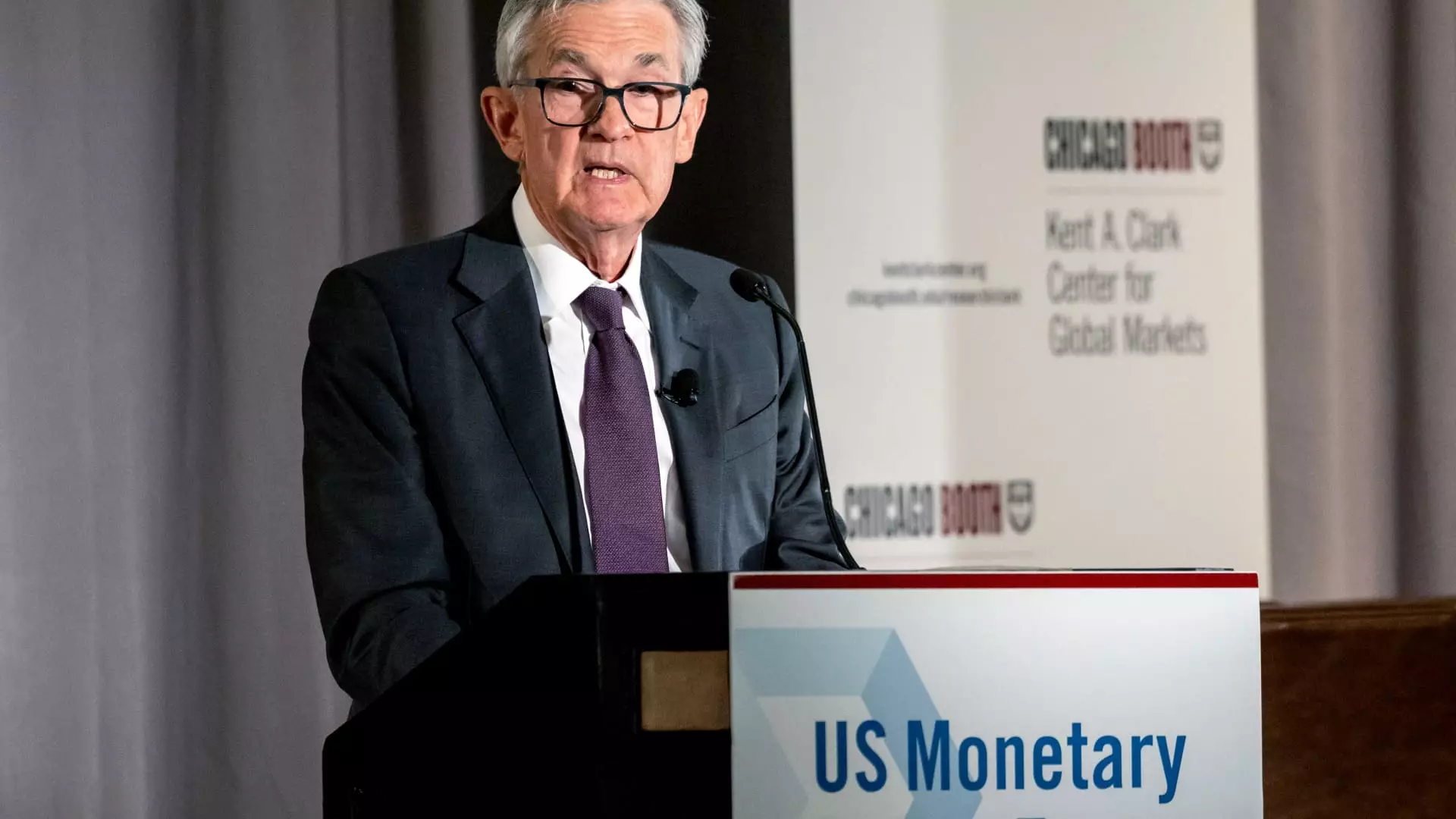In a landscape rife with unpredictability, Federal Reserve Chairman Jerome Powell has adopted a conspicuously cautious approach toward interest rate adjustments. As the United States grapples with the economic ramifications of President Donald Trump’s radical policy shifts—touching trade, immigration, fiscal strategy, and regulation—Powell emphasized the Fed’s commitment to a “wait-and-see” policy. This strategic pause is particularly intriguing as markets tremble with anxiety over tariffs and myriad political variables, ultimately forcing the Fed to adopt a more defensive posture.
Powell’s rhetoric about monitoring these policy changes reflects a broader acknowledgment of the inherent risks they pose. The Fed’s focus on “separating the signal from the noise” aptly encapsulates the challenge; policy adjustments are intricate, and their effects on the economy are often indirect and nonlinear. By advocating patience, Powell sends a clear message to markets: the Fed won’t be rushed into predetermined decisions based on fleeting market sentiments.
Market Expectations vs. Fed Realities
Despite Powell’s assurances of stability, traders appear anything but convinced. Their urgent calls for rate cuts—amounting to a projection of three-quarter percentage point reductions by year-end—signal a growing disconnect between market expectations and the Fed’s observed realities. This mismatch inevitably raises questions: Is the market overly pessimistic, or is the Fed lagging behind in its responsiveness to economic signals?
After all, Powell has painted a relatively rosy picture of the American economy, citing a “solid labor market” and inflation gradually aligning back to the Fed’s 2% target. Yet, amidst this optimistic backdrop lies the specter of Trump’s tariffs, generating a sense of unease among both consumers and investors. The juxtaposition of the underlying health of the economy against the potential for disruptive policy underscored by ongoing tariff discussions illustrates a conundrum that warrants further examination.
Inflation: The Looming Threat
What’s fascinating about Powell’s assessment is the dual nature of inflation expectations. By maintaining that inflation is currently hovering around 2.5% — with even higher rates when stripping out volatile food and energy prices — one could argue that only modest adjustments are warranted. However, Fed Governor Adriana Kugler’s warning of “important upside risks for inflation” hints at a worrisome undercurrent; inflation may not only return but could escalate unexpectedly as the economy unfolds.
The recent labor report, while showcasing a respectable increase in nonfarm payrolls, must also compel us to consider whether wage growth—outpacing inflation at a sustainable pace—could trigger further inflationary pressures. With average hourly earnings rising 4% year-on-year, the potential for an overheating economy hangs in the balance, placing additional burdens on the Fed’s cautious approach.
Political Ramifications and Economic Reality
The intersection of fiscal policy and central bank independence is particularly salient in this political climate. Powell’s judiciousness is a tacit acknowledgment of a political atmosphere that has become increasingly volatile and unpredictable. As the Trump administration undertakes significant policy shifts, the broader implications for fiscal discipline and regulatory oversight remain uncertain. The Federal Reserve’s ability to navigate these turbulent waters without succumbing to political pressure is crucial.
In the wake of such uncertainties, it is crucial for the Fed to embody a stable, principled response rather than yielding to market pressures that may be irrational. Just because the political landscape is fraught with debates over trade tariffs doesn’t mean that monetary policy should react in kind. Powell’s insistence on a measured approach is indicative of a broader recognition that decisions made in haste can lead to deleterious long-term consequences.
Looking Ahead with Caution
Ultimately, the Federal Reserve’s path forward hinges on navigating complexities wrought by external factors—both domestic and geopolitical. The commitment to holding steady on interest rates until clearer signals emerge is a prudent stance given the current environment. It invites a philosophy of resilience over reaction; the Fed is not merely reacting to the noise of the markets but strategically assessing the road ahead.
In a time where economic turbulence is the norm, such level-headedness may be precisely what is required to bolster confidence in financial markets. Whether this cautious optimism can be maintained amidst ever-shifting sands of policy remains to be seen, but Powell’s comments suggest an astute awareness of the macroeconomic landscape. In these unpredictable times, foresight and prudence may well serve as the bedrock for sustained economic growth.

